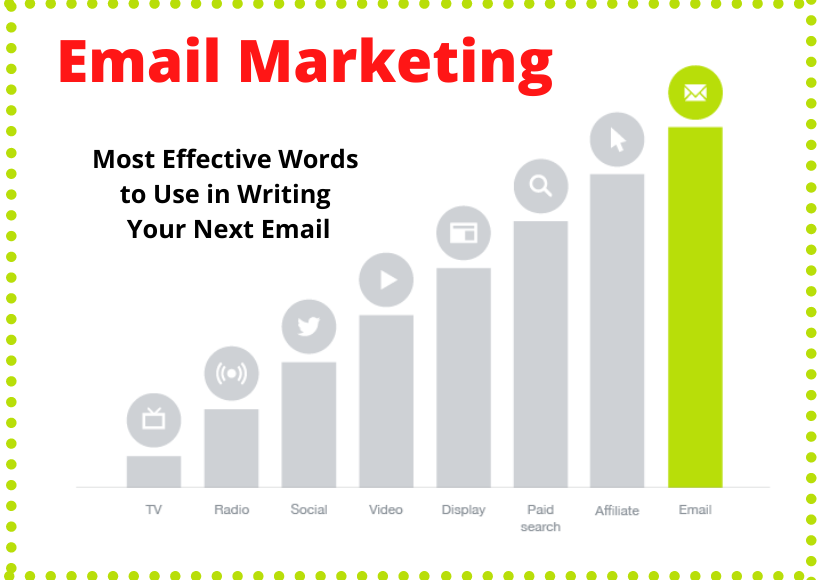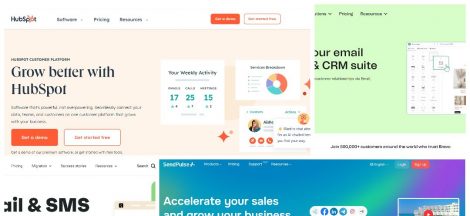A lot of the time marketers think they’ve got their perfect email sorted, and then mass emails are sent, and the statistics say otherwise. It’s hard to craft the perfect email and it’s often difficult to know just what went wrong, but it needn’t always be about trial and error. Changing how one writes their emails will ultimately lead to increased engagement if the correct words are used to get the audience to respond.
Good news – you don’t need ten years of professional copywriting experience to hand in your next effective email. Harnessing the use of just eight effective words will help you lead generation rates to move substantially from single figures and into double digits. Once you’ve done your research into writing emails for marketing it’s time to boost your email’s appeal with eight useful words.
Ready? Let’s find out more.
1. Now
What is it about this word that strikes with such urgency and action? The word “now” can significantly help increase click-through rates when inserted within a call to action. Research has shown that it also works in subject lines. Including this word within emails certainly shows people how to do something with urgency.
It’s important when reminding recipients of urgency that they are reminded of their call to action, otherwise, driving home this sense of urgency will be of little use. Also, read Magento SEO vs Shopify SEO.
2. Thanks
This is a highly emotive word that makes the audience feel appreciated, so it can be harnessed effectively to associate positive feelings towards your brand and your customers or subscribers. Thanking your customers or subscribers is one of the most important things to do in email communication because they will now appreciate you more, and so will turn to you for solutions to their problems. It’s nice to know you’re appreciated and it’s also great etiquette.
There are numerous ways to thank customers, from a purchase confirmation to an informative email celebrating a ten-year anniversary – get creative and find a way to thank your customers today.
3. You or Your
Using the second person makes a refreshing change from the continuous use of the third person. Not only this, but these words help give a personal feel and connection, which allows the email recipient to feel as though they are being spoken to exclusively. This is a whole lot more compelling and gets recipients excited about what they’re reading. No wonder we’ve used “your” in this article title!
4. Easy
Why should something be difficult for the recipient? It needn’t be – it should be easy. Putting this word it communicates the idea that something is not difficult and can psychologically take a weight off the recipient’s shoulders, helping to relieve any anxieties they may have about what they’re reading. It doesn’t matter whether you’re working for anybody or you are your own boss; you need to make sure your emails are perfect.
Imagine that you’re someone who has been sent an important offer about finance. This subject is likely to arouse some sort of tension within you as money is very important, so how would you react if you feel reassured that what is being proposed is easy? Many people would feel more confident, and so would, probably, follow through with what is being proposed.
5. *Name Here*
Ok, so it’s not strictly one word, but personalizing your emails is a strategy that needs to be harnessed, otherwise, why should the recipient bother?
Research shows that when one hears their name, they feel important because the information is given to us for our benefit. No wonder children often first learn to read and write their names before any other words. Putting the recipient’s name in boosts engagement and trust them, so try and automate your emails to include names as much as you can.
6. And
Of course, this is a common function word that joins things together, but if you incorporate it correctly, it can be used to add value.
Phrasing using “and” can be applied to make email recipients feel as though they are getting more than they expect and a good deal. As an example, you could take the phrase “The guide to email marketing communication” and adapt it to read “The guide to email marketing and 101+ communicative phrases”. Which sounds like there is more value involved? The word “and” can really maximize value and response rates.
7. New
If your recipient reads the word “new”, they may think that the offer attached to the email is fresh, and so they may seek the opportunity to follow through with its call to action before other people do. It’s a word that works well particularly when selling by email because it shows excitement. Everybody prefers something new to something second-hand!
The word “new” also solidifies a concept in the recipient’s mind that the information they’re receiving is accurate and up to date – perfect if you’re trying to offer downloads or new reports.
8. Free
We love things that are free because there isn’t any risk involved. Anyone would prefer not to pay for something because there are fewer repercussions for doing this, so the same will apply in emails – the word “free” will signify the lack of risk involved in following through with what’s being asked in the email. This word is very often harnessed in sales emails, most often to give a higher level of service with free postage and packaging.
Get Writing NOW
Okay, so we’re not going to labor the point but rather remind you that if your marketing strategy is focused on the use of email then don’t forget to make your call to action especially clear and easy to follow. There’s no use in writing a great email that engages and makes an emotive connection if there isn’t going to be any result from it. Most of the time marketing efforts and strategies will forget that without telling your recipient what to do, they won’t do it. Drive home that calls to action and have fun in your email writing process.
Suggested:
8 Tips to Increase Email Open Rates Using Trigger Words.
How can Google workspace Admin access your email?





 Best 8 Killer Marketing Ideas For Your Recruitment Agency in 2024
Best 8 Killer Marketing Ideas For Your Recruitment Agency in 2024